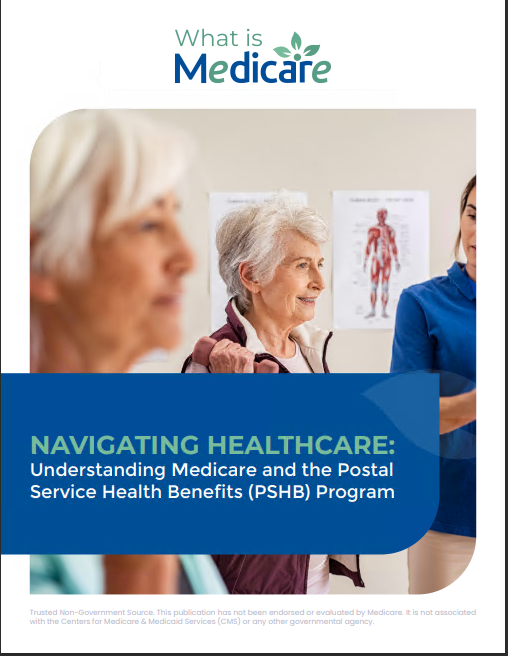Key Takeaways
-
Missing your Medicare enrollment period in 2025 can lead to costly lifetime penalties, delayed coverage, and even denied access to essential healthcare.
-
You can’t rely on good intentions or assumed eligibility—understanding specific enrollment timelines and acting promptly is the only way to protect your future coverage and costs.
Medicare Enrollment Isn’t Automatic for Everyone
Many people assume that Medicare enrollment just happens on its own, but that’s not always the case. In 2025, you must understand whether you need to actively enroll—because missing your window can result in severe consequences.
Unless you’re already receiving Social Security or Railroad Retirement Board benefits at least four months before turning 65, you are not automatically enrolled. That means if you wait too long or miss your Initial Enrollment Period (IEP), you may face penalties and coverage gaps.
The Initial Enrollment Period (IEP) Is Your First Opportunity
Your Initial Enrollment Period is your first chance to enroll in Medicare. In 2025, the rules remain the same:
-
Starts: 3 months before the month you turn 65
-
Ends: 3 months after the month you turn 65
-
Total duration: 7 months
For example, if your 65th birthday is in August, your IEP begins in May and ends in November. Failing to act during this window can trigger a waiting period for coverage and late enrollment penalties.
What You Should Do During IEP
-
Enroll in Medicare Part A (hospital insurance), which is usually premium-free if you worked and paid Medicare taxes for at least 10 years.
-
Consider enrolling in Medicare Part B (medical insurance), even if you’re still working, unless you have creditable coverage through your employer.
-
Explore Part D for prescription drug coverage or a Medigap plan if you want to limit out-of-pocket costs.
General Enrollment Period (GEP): The Backup Window
If you miss your IEP, the next chance to sign up for Medicare Part A and/or Part B is the General Enrollment Period, which runs every year:
-
January 1 to March 31
-
Coverage begins July 1
But signing up during this period means you’re going without Medicare coverage for part of the year. Even worse, late enrollment penalties may apply for both Part B and Part D. These penalties are not one-time fees—they can increase your premiums for the rest of your life.
Medicare Part D: The Clock Starts Ticking Fast
Prescription drug coverage is vital. In 2025, most Medicare beneficiaries need to enroll in Part D when first eligible. If you delay, even by a few months, you may have to pay a permanent late enrollment penalty—unless you have other creditable prescription coverage.
The penalty is calculated as 1% of the national base premium for every month you delayed enrollment, and it gets added to your premium permanently.
Creditable Coverage and Why It Matters
If you have drug coverage through an employer or union that’s considered creditable—meaning it’s expected to pay, on average, at least as much as Medicare’s standard prescription plan—you won’t face a penalty if you enroll in Part D later. But make sure you have documentation.
Special Enrollment Periods (SEPs): Limited Exceptions
Medicare does allow for Special Enrollment Periods in specific situations:
-
You or your spouse are still working and have group health coverage
-
You lose your employer coverage
-
You move out of your plan’s service area
-
Your plan terminates coverage
The SEP rules are strict. For example, if you retire and lose employer health insurance, you only have 8 months to sign up for Part B without a penalty—and just 2 months to choose a Part D or Medicare Advantage plan.
You must act promptly. Good intentions or misunderstanding the rules won’t protect you from penalties.
Why Waiting Can Cost You for Life
Missing Medicare enrollment in 2025 doesn’t just mean inconvenience. It can mean:
-
Delayed coverage for doctor visits, hospital care, and prescriptions
-
Late enrollment penalties that permanently increase your monthly premiums
-
Gaps in care during which you may have to pay all your costs out of pocket
The most common scenario is when someone assumes they can delay Part B because they’re not retired yet, but their employer coverage isn’t considered creditable. The result? A 10% penalty for each full 12-month period you were eligible but didn’t sign up—permanently added to your Part B premium.
Don’t Assume Retirement or COBRA Is Enough
Many people assume that retiring at 65 or having COBRA means they’re covered. But in Medicare’s eyes, COBRA is not creditable coverage for Part B. Once you’re eligible for Medicare, COBRA doesn’t protect you from penalties or late enrollment.
Even retiree insurance through your former employer may not meet Medicare’s requirements unless it’s explicitly creditable. Always check with your benefits administrator and get documentation.
Enrollment for Those Under 65 and Disabled
If you’re under 65 and receive Social Security Disability Insurance (SSDI), you’re eligible for Medicare after 24 months of receiving benefits. Enrollment is typically automatic at that point.
However, if you decline Part B or fail to enroll in Part D when eligible, the same late penalties apply. You must be proactive about your coverage choices, even if you’re automatically enrolled.
When You Want to Switch Plans, Not Just Enroll
Even if you signed up for Medicare on time, you must still pay attention to enrollment windows for making changes. Each year, you can change your Medicare Advantage or Part D plan during:
-
Annual Enrollment Period (AEP): October 15 to December 7
-
Medicare Advantage Open Enrollment Period: January 1 to March 31 (for Medicare Advantage enrollees only)
Outside of these periods, changes can only be made during Special Enrollment Periods triggered by specific life events.
Mistakes Aren’t Forgiven Just Because You Didn’t Know
Medicare holds you responsible for understanding the enrollment rules. There’s no appeal for late penalties based solely on misunderstanding or forgetfulness.
If you missed your window because you assumed something or didn’t know better, you’ll still face the same penalties and delayed coverage as anyone else.
That’s why understanding timelines and acting promptly is crucial in 2025.
Steps You Can Take Right Now
-
Confirm your Medicare eligibility date—usually the month you turn 65.
-
Mark your Initial Enrollment Period on your calendar.
-
Verify any current coverage is creditable by Medicare standards.
-
Don’t wait until you feel sick or need care—enrollment must happen before that.
-
Check your Social Security status. If you aren’t receiving benefits yet, you must manually enroll in Medicare.
Penalties Stack Over Time
In 2025, the longer you wait after missing your IEP, the higher your penalties can grow:
-
Part B: 10% premium increase for every 12-month period you delay
-
Part D: 1% premium increase for each month you delay
These penalties aren’t capped—they accumulate and remain part of your costs permanently.
And the delay in coverage from waiting for the next GEP means you could go months or more without access to routine or emergency care under Medicare.
Be Prepared, Not Regretful
You can’t retroactively fix a missed enrollment with Medicare. The best thing you can do is prepare early and act during the correct window. Medicare in 2025 offers stability, but only if you follow its strict rules.
If you’re unsure about your eligibility or enrollment timing, it’s best to speak with someone who understands how it all fits together.
Understanding Enrollment Now Prevents Crisis Later
Missing Medicare deadlines in 2025 has permanent consequences that no amount of good intentions can reverse. Medicare does not offer leniency based on confusion or delay.
Protect yourself by learning the timelines, documenting your current coverage, and making your enrollment decisions before the deadlines hit.
If you’re unsure which parts of Medicare to enroll in—or when—reach out to a licensed agent listed on this website for help reviewing your situation and avoiding costly mistakes.









